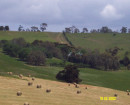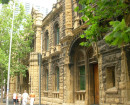Cemetery Precinct
Sebastapol Road BUNINYONG, BALLARAT CITY
-
Add to tour
You must log in to do that.
-
Share
-
Shortlist place
You must log in to do that.
- Download report
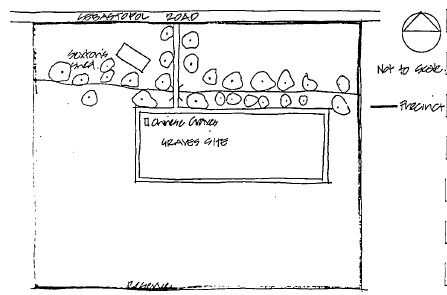

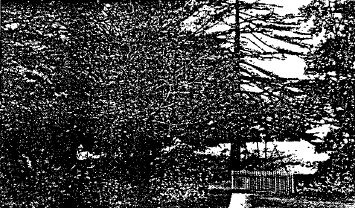
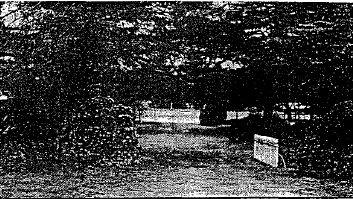
Statement of Significance
The cemetery at Buninyong was established in 1855 and, for this type of site, has remained in a substantially intact state. The original cemetery building was erected with the establishment of the cemetery, however one of the earliest burials preceding its establishment, occurred in 1852. Buninyong's first doctor, Dr. Power was buried in this year at this cemetery in Sebastopol Road, while other early inhabitants, such as Mrs Innes and Mr Martin, were buried at another site, south of the Tannery Dam.
Opposition was made in 1860 to the district surveyor's positioning of this cemetery on a plan presented to Council. The site, about one by three miles, was situated amongst mullock heaps and mining sites, but although some thought it an unsuitable location, work had already begun there and it was therefore adopted for this use.
By 1875 the Cemetery site had been transformed and was reported in the Buninyong Telegraph
'The position of the reserve is anything but beautiful, surrounded as it is by large heaps of mullock and disused claims, still there is a gentle slope down to the creek facing the Imperial claim which is adorned by handsome specimens of trees and shrubs, whilst along the edge of the water course are Wellington gigantia, pinus insignis, cypressus torulosa and lambertiana. Also offshoots of the "brave old oak" and the elm, whilst the weeping willow is likewise well represented. As visitors come through the gates they come upon well formed and clearly kept gravel path fringed either side with a tasteful variety of trees and shrubs. Next they come to a culvert crossing the creek.'
Most of these improvements were undertaken in 1873 and 1,874 under the Sexton, Mr Bull. The Cemetery Trustees were considering plans for the site in 1873 and it was agreed that Mr Harvey draw up suitable plans. In 1873, most of the planting occurred and donations of plants were received from Mr Moss of 'Mossmount' nursery in Buninyong, Mr Innes, Mr Clark and Mr Biddle. Many of these plantings have been retained and exist in conjunction with later planting.
Changes were 'made to the planting this century, largely due to profitable ventures which financed the maintenance of the cemetery. In 1909 every second pine in the south east corner of the site was cut down and sold to a sawmiller, while in 1916 one hundred pines were planted for the sole purpose of selling these to sawmillers. Goldmining was allowed between the front fence and creek in 1913, while from 1919 to 1930 the Sexton shed, grew beds of daffodils in the western section for both selling to visitors and for display. Evidence of this planting still remains.
Few cemetery structures have been retained and the present Sexton's shed is a recent addition which detracts from the overall character of the site. Entry gates, cast iron bridge railings and unedged gravel paths are the only remnants.
Notable Buninyong residents have been buried in this cemetery, including Reverend Hastie, Mr Innes, Mr Hiscock and the builder Richard Rennie. The cemetery also incorporates a very small Chinese section.
The Buninyong Cemetery is significant in its retention of forrm and early planting and for its unlikely location, amidst a former gold mining area.
-
-
Cemetery Precinct - Physical Description 1
The site, about one by three miles, was situated amongst mullock heaps and mining sites, but although some thought it an unsuitable location, work had already begun there and it was therefore adopted for this use. By 1875 the Cemetery site had been transformed and was reported in the Buninyong Telegraph
'The position of the reserve is anything but beautiful, surrounded as it is by large heaps of mullock and disused claims, still there is a gentle slope down to the creek facing the Imperial claim which is adorned by handsome specimens of trees and shrubs, whilst along the edge of the water course are Wellington gigantia, pinus insignis, cypressus torulosa and lambertiana. Also offshoots of the "brave old oak" and the elm, whilst the weeping willow is likewise well represented. As visitors come through the gates they come upon well formed and clearly kept gravel path fringed either side with a tasteful variety of trees and shrubs. Next they come to a culvert crossing the creek.'
Heritage Study and Grading
Ballarat - Buninyong Conservation Study
Author: Colman Sutherland Conservation Consultants
Year: 1983
Grading:
-
-
-
-
-
WOAH HAUP NO.1 MINE
 Victorian Heritage Inventory
Victorian Heritage Inventory -
WOAH HAUP CENTRAL MINE
 Victorian Heritage Inventory
Victorian Heritage Inventory -
ONE EYE GULLY
 Victorian Heritage Inventory
Victorian Heritage Inventory
-
-
